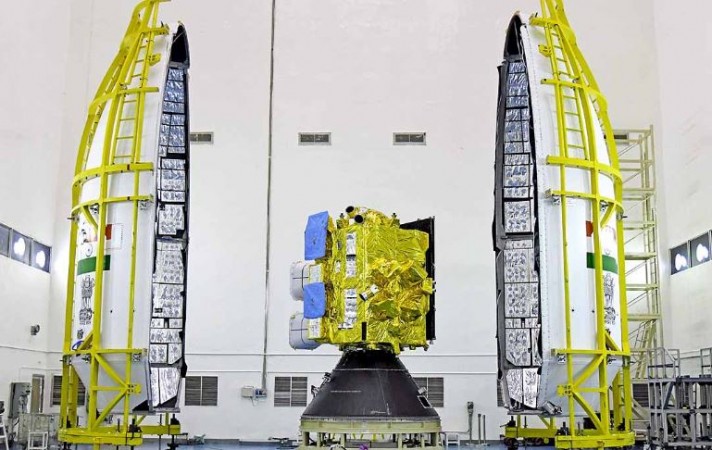
New Delhi: The Indian Space Research Organisation (ISRO) is preparing for the upcoming launch of the INSAT-3DS satellite, which will significantly bolster the country's meteorological capabilities. Scheduled to liftoff aboard the powerful Geosynchronous Satellite Launch Vehicle, designated GSLV-F14, this mission is slated for February 17, 2024, from the Satish Dhawan Space Centre (SDSC-SHAR) in Sriharikota, marking a significant milestone in India's space exploration efforts.
The GSLV-F14 stands as a testament to India's prowess in aerospace engineering, towering at a height of 51.7 meters and boasting a liftoff mass of an impressive 420 tonnes. Its design represents a feat of modern rocketry, featuring a three-stage propulsion system. The first stage, GS1, is powered by a solid propellant motor with a capacity of 139 tons of propellant, complemented by four strap-on stages, each carrying 40 tons of earth-storable liquid propellant. Continuing the journey, the second stage, GS2, carries another 40-ton earth-storable propellant load. The final thrust to reach orbit is provided by the third stage, GS3, a cryogenic powerhouse loaded with 15 tons of liquid oxygen and liquid hydrogen.
As the GSLV-F14 ascends through the atmosphere, it will safeguard its precious cargo, the INSAT-3DS satellite, within an Ogive payload fairing. This mission signifies more than just a routine launch; it represents a significant advancement in meteorological observation and environmental monitoring. Funded entirely by the Ministry of Earth Sciences (MoES), the INSAT-3DS is a continuation of the Third Generation Meteorological Satellite series, poised to elevate weather forecasting and disaster warning capabilities.
Once operational, INSAT-3DS will join its predecessors, INSAT-3D and INSAT-3DR, in furnishing critical data for meteorological services. Equipped with advanced instruments, the satellite is designed to monitor Earth's surface and oceans, providing invaluable insights across various spectral channels crucial for meteorology. The collaborative efforts of Indian industries have played a pivotal role in the development of the satellite, underscoring the country's burgeoning self-reliance in space technology.
Legacy of PV Narasimha Rao: Economic Reforms and Political Contributions
AAP's Response to ED Summons: Political Posturing or Legal Challenge?